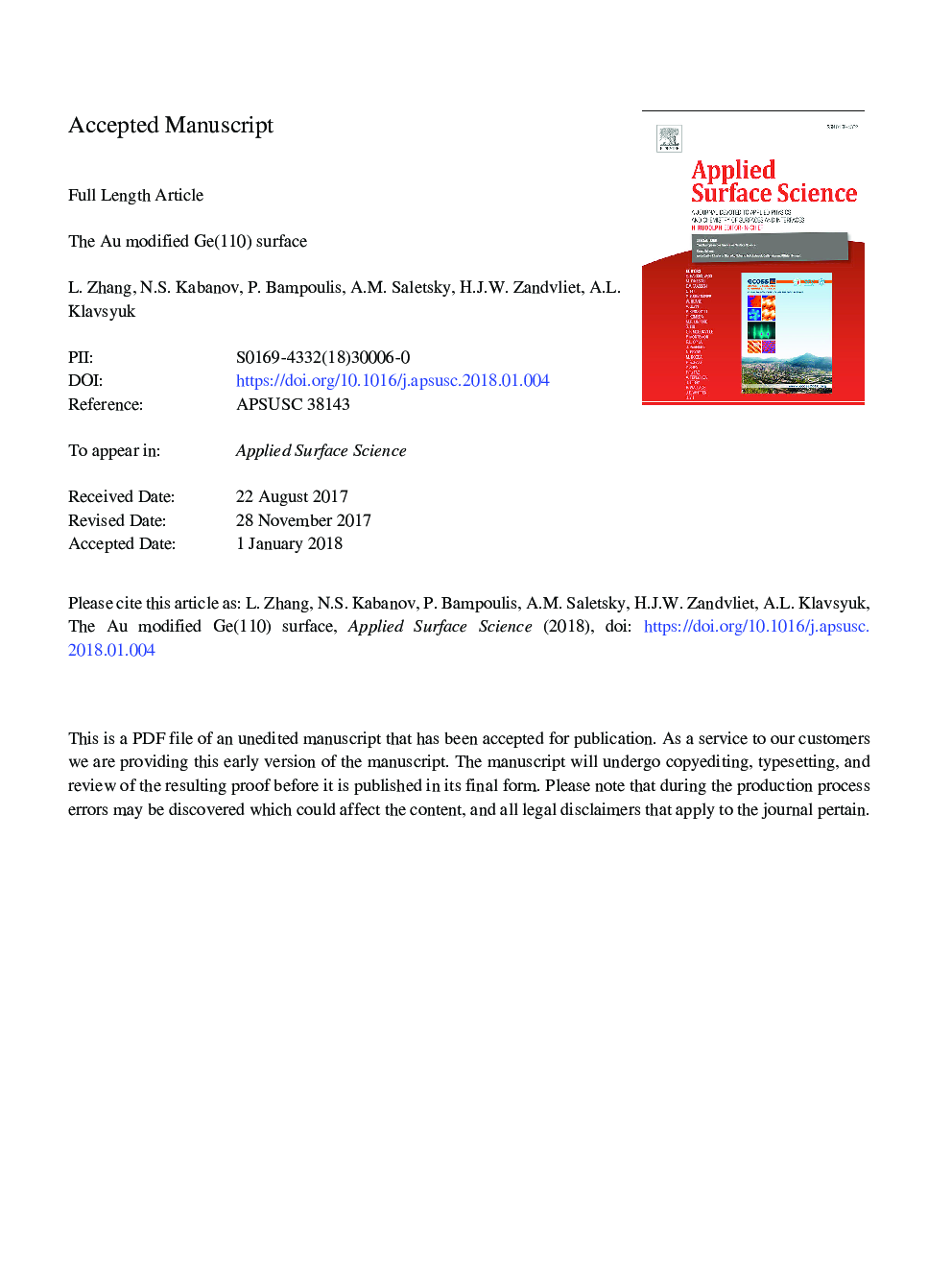| Article ID | Journal | Published Year | Pages | File Type |
|---|---|---|---|---|
| 7835183 | Applied Surface Science | 2018 | 18 Pages |
Abstract
The pristine Ge(1â¯1â¯0) surface is composed of Ge pentagons, which are arranged in relatively large (16â¯Ãâ¯2) and c(8â¯Ãâ¯10) unit cells. The deposition of sub-monolayer amounts of Au and mild annealing results into de-reconstructed Ge(1â¯1â¯0) regions completely free of Ge pentagons and regions composed of nanowires that are aligned along the high symmetry [11¯0] direction of the Ge(1â¯1â¯0) surface. The de-reconstructed Ge(1â¯1â¯0) regions consist of atomic rows that are aligned along the [11¯0] direction. A substantial fraction of these substrate rows are straight and resemble the atom rows of the unreconstructed, i.e. bulk terminated, Ge(1â¯1â¯0) surface, whereas the other substrate rows have a meandering appearance. These meandering atom rows are comprised of two types of atoms, one type that appears dim, whereas the other type appears bright in filled-state scanning tunneling microscopy images. Using density functional theory calculations, we have tested more than 20 different atomic models for the meandering atom rows. The density functional theory calculations reveal that it is energetically favorable for the deposited Au atoms to exchange position with Ge atoms in the first layer. Based on these findings we conclude that the bright atoms are Ge atoms, whereas the dim atoms are Au atoms.
Related Topics
Physical Sciences and Engineering
Chemistry
Physical and Theoretical Chemistry
Authors
L. Zhang, N.S. Kabanov, P. Bampoulis, A.M. Saletsky, H.J.W. Zandvliet, A.L. Klavsyuk,
